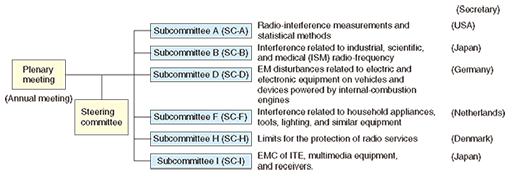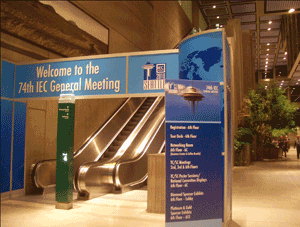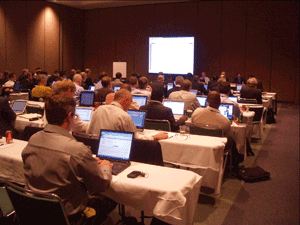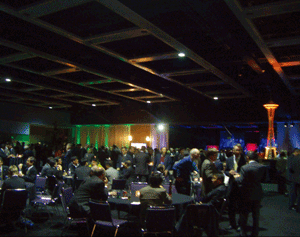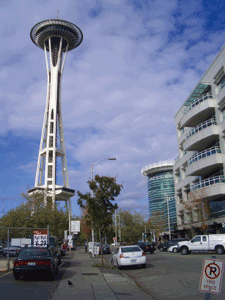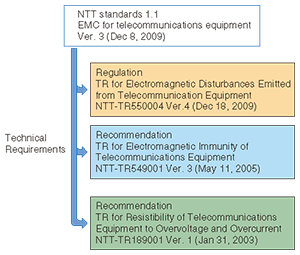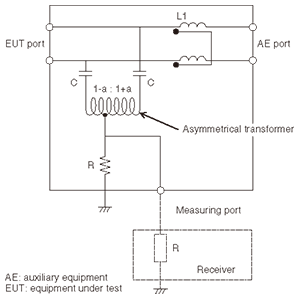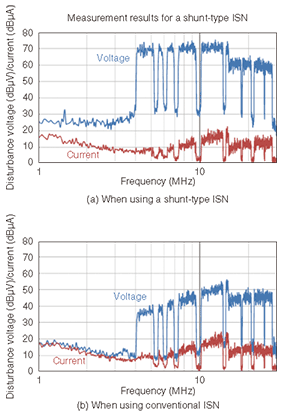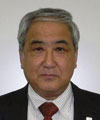 |
|||||||||||||||
|
|
|||||||||||||||
|
Global Standardization Activities Vol. 9, No. 3, pp. 83–88, Mar. 2011. https://doi.org/10.53829/ntr201103gls Electromagnetic Compatibility Standardization Activities in the Telecommunication Field at the 2010 IEC/CISPR Seattle MeetingAbstractThis article summarizes recent electromagnetic compatibility (EMC) standardization activities in the telecommunication field at the 2010 IEC/CISPR Plenary Meeting held in Seattle, Washington, USA, from October 6 to October 14 and reports on the state of deliberations relevant to NTT’s telecommunication business. As EMC standards are an important issue for the NTT Group, it defines EMC requirements for the provision of safe and secure telecommunication services.
1. IntroductionThe NTT Group maintains in-house technical requirements (NTT-TRs) that set out the electromagnetic compatibility (EMC) quality levels to be adhered to when developing or procuring telecommunication equipment and devices. NTT-TRs stipulate EMC requirements (acceptable limits and measurement methods) to ensure safe and secure telecommunication services in terms of emissions (of electromagnetic disturbances), immunity (to electromagnetic disturbances), and overvoltage tolerance capability. The acceptable EMC limits and measurement methods specified in NTT-TRs conform to international standards on information technology equipment (ITE) or telecommunication equipment set out by organizations such as IEC/CISPR (explained below) and ITU-T SG5 (International Telecommunication Union, Telecommunication Standardization Sector, Study Group 5) so that enterprises in related industrial sectors either in Japan or abroad can abide by the NTT-TRs. This article summarizes events at the 2010 IEC/CISPR Plenary Meeting held in Seattle, Washington, USA, from October 6 to October 14, 2010. It provides an update to last year’s article about the 2009 meeting [1]. 2. Meeting overviewThe Comite International Special des Perturbations Radioelectriques (CISPR)––also known as the International Special Committee on Radio Interference––is a special committee of the International Electrotechnical Commission (IEC). To ensure that there are consistent global standards, it issues international standards for the emission levels of unwanted electromagnetic disturbances from various devices (radio interference sources) as well as for the apparatus and methods used to measure such disturbances. The secretariat is located in Geneva, Switzerland. CISPR membership includes 42 national committees and a number of related international organizations (International Council on Large Electric Systems (CIGRE), European Broadcasting Union (EBU), European Telecommunications Standards Institute (ETSI), International Amateur Radio Union (IARU), and International Telecommunication Union, Radiocommunication Sector (ITU-R)). CISPR standards function as Horizontal Standards within the IEC. They are used across all Technical Committees (TCs) and, as such, impact a wide range of industries. CISPR comprises a Steering Committee and six subcommittees (A, B, D, F, H, and I) under the CISPR Plenary Assembly (Fig. 1). Each subcommittee is responsible for setting standards in its respective industrial field. Working Groups (WGs), set up to handle specific themes, meet throughout the year.
The 2010 IEC/CISPR Plenary Meeting was held at the Washington State Convention & Trade Center in Seattle and lasted for eight days. The Steering Committee, the six subcommittees, 14 WGs, and four joint task forces (JTFs) met in parallel with the Plenary Meeting. Japan sent 38 delegates representing the Ministry of Internal Affairs and Communications, the National Institute of Information and Communications Technology, universities, corporations, and industry groups. NTT sent four delegates. This year’s IEC/CISPR Plenary Meeting was held alongside the 74th IEC General Meeting, creating a very large conference that attracted 2800 delegates to some 90 TC meetings over its two-week run (Photos 1–4).
3. Impact of IEC/CISPR standardization on NTT’s businessNTT Group’s in-house EMC regulations include EMC standards for telecommunication equipment (in-house standards), which specify the minimum EMC requirements and operational methods for telecommunication equipment that NTT uses to provide telecommunication services as well as for telecommunication equipment provided to customers. NTT-TRs consist of technical requirements taken from the in-house standards (Fig. 2) [2]. Currently, there are three TR documents: “Technical requirements for electromagnetic disturbance emitted from telecommunications equipment (TR550004)”, “Technical requirements for electromagnetic immunity of telecommunications equipment (TR549001)”, and “Technical requirements for resistibility of telecommunications equipment to overvoltage and overcurrent (TR189001)”. TR550004 covers electromagnetic disturbances generated by telecommunication equipment, TR549001 covers the capability of telecommunication equipment to tolerate electromagnetic disturbances, and TR189001 covers the capability of telecommunication equipment to tolerate overvoltage. Telecommunication equipment specifications cite these TRs as EMC requirements. The requirements in TR550004 are mandatory, while those in TR549001 and TR189001 are currently recommendations.
TR549001 [3] complies with CISPR 22 and, domes-tically, with the voluntary technical standards defined by the VCCI Council (VCCI). It also incorporates international standards from ITU-T and other bodies as requirements that apply to telecommunication equipment. Since December 2009, we have been adding emission regulations for electromagnetic disturbances in the 1–6 GHz band in conjunction with amendments to international standards and domestic rulings (CISPR 22 edition 5.2) and have been adopting rules for conducted disturbances at telecommunication ports as related VCCI technical standards come into effect. TR549001 [4] complies with CISPR 24 and domestic rulings (the current CISPR committee of the Information and Communications Council). In Japan, CISPR 24 formerly operated as a guideline for each industry, but the Telecommunication Technology Committee (TTC) standardized it as JS-CISPR 24 Version 1 in August 2010 as a domestic standard for the telecommunication industry. We expect that, with the increasing prevalence of broadband services, more international standards and TRs associated with TTC standards will be established to cope with EMC failures in IP (Internet protocol) telecommunication equipment. NTT TRs are publicly available from NTT’s International Procurement web page [3], [4]. 4. Main issues and discussion at the meeting4.1 Subcommittee ACISPR Subcommittee A is engaged in forming base international standards for radio disturbance measurement apparatus and methods. The subcommittee’s main mission is preparing and revising the CISPR 16 series of standards that specify radio disturbance and immunity measurement apparatus and methods and are designated as base standards cited by all other CISPR standards. At the Seattle meeting, NTT proposed a new impedance stabilization network (ISN) for measuring conducted disturbances at telecommunication ports to coincide with maintenance to CISPR 16-1-2 (Radio disturbance and immunity measuring apparatus––Ancillary equipment––Conducted disturbances). As a result of NTT’s proposal, the inclusion of the ISN in CISPR 16 will be studied after discussions of its necessity in Subcommittee I, as described below. 4.2 Subcommittee ISubcommittee I is involved in creating international standards regarding EMC of ITE, multimedia equipment, and receivers. This subcommittee prepares and revises emissions standards (CISPR 22 and CISPR 32) and immunity standards (CISPR 24 and CISPR 35) for telecommunication equipment. It is working on three issues that have a direct bearing on NTT’s business. (1) Emission and immunity standards for multimedia equipment (2) Measurement methods of and limits on disturbances from high-speed power line telecommunication (PLT) equipment (3) New ISN for measuring conducted disturbances at telecommunication ports Issue (1) concerns the establishment of emission standards (CISPR 32) and immunity standards (CISPR 35) that target ITE and broadcast receivers. Since the functional barrier between them has disappeared, new standards that cover both categories are being drawn up. TR550004 (for emissions) and TR549001 (for immunity) are based on the existing CISPR 22 and CISPR 24 standards, but these TRs are expected to be replaced once CISPR 32 and CISPR 35 come into effect. The establishment of new standards that will govern NTT’s required EMC performance in the future is therefore a highly relevant issue for NTT’s business. At the present time, CISPR 32 and CISPR 35 inherit most of the existing provisions without modification, but CISPR 35 is set to add provisions for testing impulse noise effects on xDSL (various types of digital subscriber line) services. We envision CISPR 32 being issued at the earliest in one to two years and CISPR 35 being issued in two to three years. Issue (2) concerns the addition to the existing CISPR 22 standard of measurement methods of and limits on disturbances from PLT equipment. This issue has been debated for more than ten years since 1999 but no agreement has been reached yet within CISPR. The Seattle meeting decided to shelve further official standardization investigation in this area. Disturbances from PLT equipment are already regulated in Japan under the Radio Act; therefore, the decision to stop standardization at CISPR has no direct effect on NTT’s business. Nevertheless, the European Committee for Electrotechnical Standardization (CENELEC) is still pushing ahead with standardization: once a European EN standard has been established, we presume that it will be incorporated as a CISPR standard. The original goal of creating a CISPR standard for PLT equipment was to unify in an international standard the many PLT equipment disturbance standards operating in different countries and regions. Should an EN standard become a CISPR standard, it may prompt revisions to Japan’s Radio Act. For this reason, we should continue to monitor developments in this area. Issue (3) involves the inclusion in CISPR standards of NTT’s newly developed ISN for measuring conducted disturbances at telecommunication ports. Conventional ISNs perform well with well-balanced* telecommunication lines, such as Ethernet lines. The problem with conventional ISNs is that they produce measurement errors when measuring poorly balanced telecommunication lines. Now that NTT Energy and Environment Systems Laboratory has developed a new ISN that resolves this problem, NTT is pressing for its inclusion in CISPR standards. Because the new ISN can be used for more accurate assessments of and correspondence to disturbances from ordinary telecommunication lines and xDSL lines, this issue will impact NTT’s business. A schematic diagram of the proposed ISN, which uses an asymmetrical transformer, is shown in Fig. 3. The way the voltage-characteristic measurements of a transmission port are improved when a telecommunication device’s electromagnetic disturbance is measured with the proposed measurement apparatus is shown in Fig. 4 [5]. This example demonstrates that the proposed measurement apparatus, using an asymmetrical transformer circuit, can measure very poorly balanced transmission ports (20 dB or less) and that the voltage measurements obtained concur with the current characteristics.
4.3 State of discussions at JTFs and other venuesThe JTF between CISPR subcommittees A and F (A&F JTF) is examining a simple alternative (CDNE method) for measuring radio-frequency disturbances from lighting equipment in the frequency range from 30 MHz to 300 MHz by a conducted disturbance measurement method that uses coupling decoupling networks (CDNs) for conducted immunity tests. Although this examination does not directly involve the measurement of electromagnetic disturbances in telecommunication equipment or systems, NTT Group experts are active in the discussions, as their direction needs to be monitored because any new standards will require lower transient noise and steady-state noise and lower energy consumption from lighting equipment used in machine rooms and datacenters. The committee draft on the CDNE method submitted just prior to the Seattle meeting was withdrawn because of too many technical deficiencies, according to a comment put forth by the NTT Group. Instead, the identified issues were discussed point by point. The CDNE method will be debated again in the A&F JTF after the committee draft has been revised in the light of the Seattle discussions. We feel that it is necessary to continue to watch the correlation between the CDNE method and conventional measurement methods performed in anechoic chambers.
5. Concluding remarksThis article described the relationship between NTT’s EMC regulations and IEC/CISPR international standards, the main issues being debated within CISPR, and the direction of discussions at the Seattle Plenary Meeting. CISPR will continue to establish new standards and update existing standards to keep abreast of the various transformations in the electromagnetic environment, such as the convergence of telecommunication equipment and broadcasting equipment driven by broadband-service proliferation and the adoption of PLT and other new transmission methods caused by the move to intelligent power control. Through participation in international EMC standardization processes and active promotion of in-house regulations, the NTT Group is committed to maintaining a good electromagnetic environment and providing high-quality, highly reliable telecommunication services. References
|
|||||||||||||||








